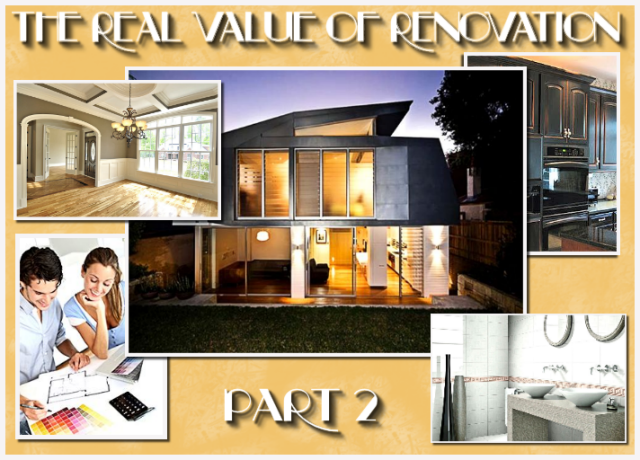For some, the decision to sell a home is almost automatic, with no hesitation: job change, seller’s market, need more room or need to downsize, etc. For others, there could be a number of reasons why a property owner might hesitate, or procrastinate, to sell. If you’ve thought about selling, but just can’t bring yourself to do it, you could have fallen victim to some of the most common top seller procrastinations listed below.
#1. “I’m waiting for the value of my property to increase.”
Patience is a virtue, but when it comes to real estate, sometimes it’s not the best practice.  Waiting to sell a property might seem like a good idea, especially in real estate markets that are still growing. But in cities where real estate markets have seen lots of competition, waiting to sell a property in order to see a large return may backfire if other nearby areas also see a rise in property values. If you’re procrastinating selling a property because of a hope that the property’s value will increase, it’s best to talk to a real estate agent about the local market to see if now is the time to sell or not.
Waiting to sell a property might seem like a good idea, especially in real estate markets that are still growing. But in cities where real estate markets have seen lots of competition, waiting to sell a property in order to see a large return may backfire if other nearby areas also see a rise in property values. If you’re procrastinating selling a property because of a hope that the property’s value will increase, it’s best to talk to a real estate agent about the local market to see if now is the time to sell or not.
#2. “I’m waiting for my house to be painted/fixed up, so I make top dollar.”
We all want to get top dollar for our property. With the many things you can do to help increase your property’s value, waiting to sell because you’re waiting to make repairs might not be the best plan if you’ve been waiting six years to paint your house. Waiting to sell because your home isn’t as up-to-date as it could be puts a lot of responsibility on you, the homeowner. If you have a busy life, it’s likely those projects will take a long time to get done, so waiting to sell until you have your home updated could be a seller procrastination in disguise, and definitely something to avoid.
#3. “I’m waiting for the last kid to go to college.”
While it may seem like a great idea to stay in one home while your children grow, the reality is real estate markets all over the country go up and down year to year, and if you’re hoping to make a killing on your home once your kids have flown the coop, you might be out of luck. Markets that are popular now might not be in 7 to 17 years. When it comes to real estate, nothing is guaranteed, especially in the not so foreseeable future. By waiting, you’re betting on an increase for real estate in your area, and while that bet might seem like a sure thing right now, the future is unknown.
#4. “I’m playing the long position like my parents.”
For many Americans who have recently retired, the homes they bought 30 to 40 years ago have  seen a very large return on investment. The median home value in the U.S. in 1980 was $47,200. As of 2014 numbers, that value rose to $188,900 (and for those markets that have seen huge gains, the median value may be hundreds of thousands greater). For those just entering the real estate market, buying a home is incredibly expensive and requires a lot more money than it did when our parents bought their first home. Real estate, especially for younger people, should almost act as a financial strategy, where one plays the local real estate market by buying low and selling high in a relatively short amount of time to fully maximize an investment. Staying in a home for only three to five years could be a much more financially sound strategy than hoping a single home’s value increases x amount over the next 40 years. The economy is completely different than it was when Baby Boomers first entered the job market. Don’t procrastinate on selling with the hope that you’ll see a greater return on your property when you retire like many of our parents are seeing.
seen a very large return on investment. The median home value in the U.S. in 1980 was $47,200. As of 2014 numbers, that value rose to $188,900 (and for those markets that have seen huge gains, the median value may be hundreds of thousands greater). For those just entering the real estate market, buying a home is incredibly expensive and requires a lot more money than it did when our parents bought their first home. Real estate, especially for younger people, should almost act as a financial strategy, where one plays the local real estate market by buying low and selling high in a relatively short amount of time to fully maximize an investment. Staying in a home for only three to five years could be a much more financially sound strategy than hoping a single home’s value increases x amount over the next 40 years. The economy is completely different than it was when Baby Boomers first entered the job market. Don’t procrastinate on selling with the hope that you’ll see a greater return on your property when you retire like many of our parents are seeing.
#5. “I’m waiting for my emotional bond to lessen.”
Memories mean a lot to many people. When it comes to a home full of memories, the emotional attachment to the property can make it very hard to sell, even when it may seem like the most common sense thing to do (or when you have to or need to sell). If you’re avoiding a home sale because of an emotional attachment, it’s best to remember that those memories will always be with you, no matter where you live. It’s very unlikely for an emotional bond to lessen, especially in a home full of love – resist the temptation to procrastinate and preserve your memories through photos and videos, which can go with you no matter the next destination.
Memories mean a lot to many people. When it comes to a home full of memories, the emotional attachment to the property can make it very hard to sell, even when it may seem like the most common sense thing to do (or when you have to or need to sell). If you’re avoiding a  home sale because of an emotional attachment, it’s best to remember that those memories will always be with you, no matter where you live. It’s very unlikely for an emotional bond to lessen, especially in a home full of love – resist the temptation to procrastinate and preserve your memories through photos and videos, which can go with you no matter the next destination.
home sale because of an emotional attachment, it’s best to remember that those memories will always be with you, no matter where you live. It’s very unlikely for an emotional bond to lessen, especially in a home full of love – resist the temptation to procrastinate and preserve your memories through photos and videos, which can go with you no matter the next destination.
Selling a home is a big decision. For some the decision is easy, for others it can mean years and years of delay. Don’t fall prey to seller procrastination – contact your local agent to help you work through your delay. S/he will be able to address your concerns and will work directly with you to come up with a solid solution to the issue.




